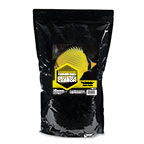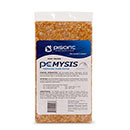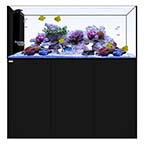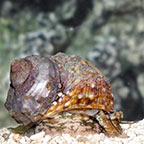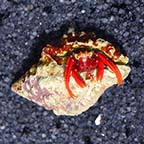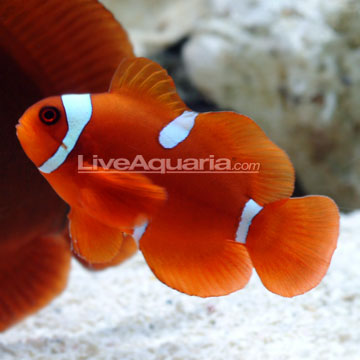
Additional locales and sizes may be available!
Additional locales and sizes may be available! Email me when availableQuick Stats
What do these Quick Stats mean? Click here for more information
What do these Quick Stats mean? Click here for more information
Overview
The Maroon Clownfish, also known as the Spine-Cheeked Anemonefish or Maroon Anemonefish, has a bold, red body color with a broad white stripe on the forehead, and white stripes on its midsection and in front of the anal fin.
A 30 gallon or larger aquarium is desirable as is a host anemone such as Bubbletip Sea Anemone (Entacmaea quadricolor). It is aggressive towards other clownfish, and they are difficult to maintain together in the same aquarium.
The Maroon Clownfish diet consists of meaty items such as frozen shrimp and herbivore preparations.
Do not move the Maroon Clownfish with a net as its cheekspines will become entangled. Use a specimen container if capture is necessary. It is difficult to maintain more than one maroon clown in the aquarium unless they are a pair. These fish like to fight among themselves.
Approximate Purchase Size: Small: 1/2" to 1-1/2"; Medium: 1-1/2" to 2-1/2"; Large: 2-1/2" to 3-1/2"; Pairs are 1 1/2" to 3"




